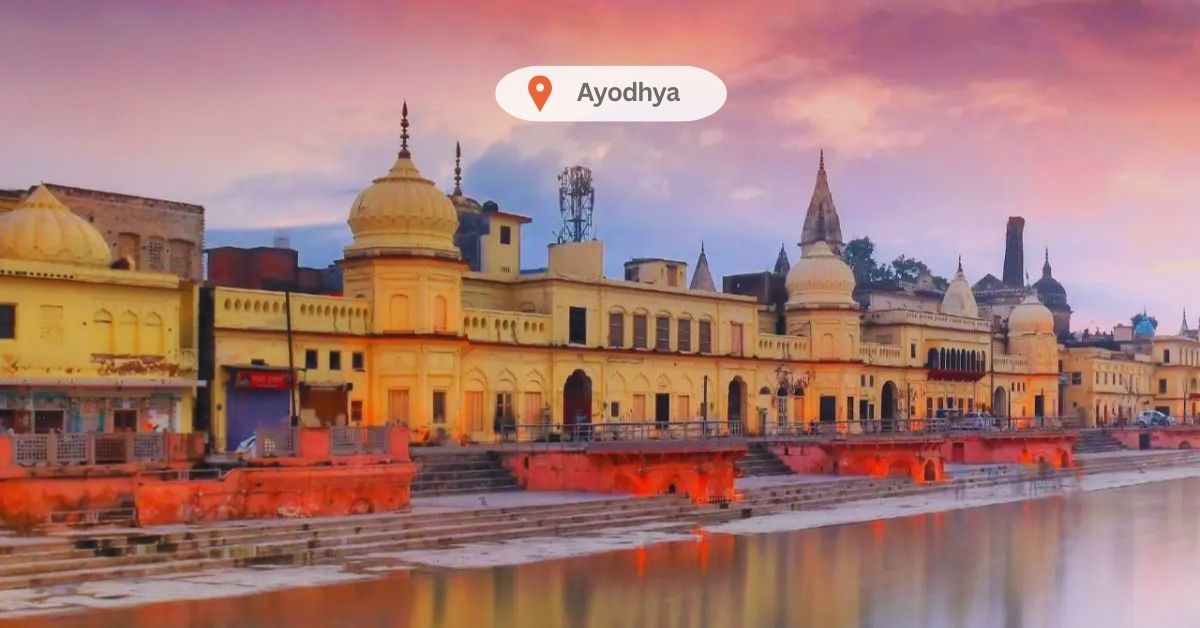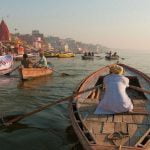Discover the top things to do in Ayodhya, from exploring ancient temples to enjoying local festivals and cultural experiences.
Ayodhya, a city steeped in mythological significance and historical grandeur, is renowned as the birthplace of Lord Rama. Located on the banks of the Saryu River in Uttar Pradesh, Ayodhya is a sacred destination for millions of Hindus. Beyond its religious significance, the city offers a rich tapestry of culture, history, and spirituality. Here are the top things to do in Ayodhya that will make your visit unforgettable.
Visit the Ram Janmabhoomi
The Ram Janmabhoomi, believed to be the exact birthplace of Lord Rama, is the most significant site in Ayodhya. The temple complex, which is currently under construction, promises to be an architectural marvel upon completion. Visiting this sacred site allows you to connect with the deep-rooted faith and devotion that pervade the city. The sense of history and spirituality here is palpable, making it a must-visit for pilgrims and tourists alike.
Explore Hanuman Garhi
Hanuman Garhi, a prominent temple dedicated to Lord Hanuman, is located on a hilltop and offers panoramic views of Ayodhya. According to legend, Hanuman resided here to protect Ayodhya. The temple, accessible via a flight of 76 steps, features an impressive idol of Lord Hanuman cradling a young Lord Rama on his lap. The temple’s architecture, coupled with the legends associated with it, makes it a fascinating place to visit.
Discover Kanak Bhawan
Kanak Bhawan, also known as Sone-ka-Ghar, is a beautiful temple dedicated to Lord Rama and Goddess Sita. The temple is famed for its gold-embellished idols of Rama and Sita, which are said to have been gifted to Sita by her mother-in-law, Queen Kaikeyi. The temple’s serene ambiance and exquisite architecture offer a peaceful retreat for visitors seeking spiritual solace.
Take a Dip in the Saryu River
The Saryu River holds immense religious significance for Hindus, and taking a dip in its sacred waters is believed to cleanse one of sins. The ghats along the river, such as Ram ki Paidi, are bustling with devotees performing rituals and prayers. The evening aarti on the banks of the Saryu is a mesmerizing experience, with lamps floating on the water and chants filling the air, creating a divine atmosphere.
Visit Treta Ke Thakur
Treta Ke Thakur is a temple located on the banks of the Saryu River, believed to be the site where Lord Rama conducted the Ashwamedha Yajna. The temple houses beautiful idols of Rama, Sita, Lakshmana, Bharat, and Shatrughna, made of black stone. This historical and spiritual site offers a glimpse into the ancient rituals and traditions associated with Lord Rama’s reign.
Explore Nageshwarnath Temple
The Nageshwarnath Temple, dedicated to Lord Shiva, is another significant religious site in Ayodhya. According to legend, this temple was built by Kush, the son of Lord Rama. The temple’s beautiful architecture and the sacred Shivlinga attract numerous devotees, especially during the festival of Mahashivaratri, when the temple is adorned with decorations and thronged by worshippers.
Experience the Ram Lila
Ram Lila, the theatrical enactment of the life of Lord Rama, is an integral part of Ayodhya’s cultural heritage. During the festival of Dussehra, Ram Lila performances are held across the city, drawing large crowds. Watching these performances, with their elaborate costumes, dramatic narration, and vibrant music, offers an immersive experience into the epic story of the Ramayana.
Visit the Guptar Ghat
Guptar Ghat, located on the banks of the Saryu River, is believed to be the place where Lord Rama took a jal samadhi (final immersion). The ghat is serene and less crowded, making it an ideal spot for contemplation and relaxation. The nearby temples, including the Chakravarti Mahraj Dashrath Mahal, add to the spiritual ambiance of this tranquil location.
Explore the Tulsi Smarak Bhavan
The Tulsi Smarak Bhavan is a memorial dedicated to the great poet Tulsidas, who wrote the Ramcharitmanas. The bhavan houses a museum showcasing artifacts related to Tulsidas and his works, along with a library containing a vast collection of manuscripts and books on the Ramayana. The bhavan also hosts cultural programs and recitations of the Ramcharitmanas, providing a deep insight into the literary and cultural heritage of Ayodhya.
Visit the Ramkatha Park
Ramkatha Park is a beautifully landscaped park that serves as a venue for cultural events and performances related to the Ramayana. The park’s open-air theatre hosts regular shows, including Ram Lila performances, musical concerts, and dance recitals. The park is a great place to relax and enjoy the cultural vibrancy of Ayodhya, surrounded by greenery and the serene ambiance of the Saryu River.
Attend Local Festivals
Ayodhya is known for its vibrant festivals, which are celebrated with great enthusiasm and devotion. Festivals like Diwali, Dussehra, Ram Navami, and Holi transform the city into a hub of cultural activities, with processions, performances, and religious ceremonies. Participating in these festivals offers a unique opportunity to experience the rich cultural traditions and community spirit of Ayodhya.
Explore the Faizabad Museum
The Faizabad Museum, located in the nearby town of Faizabad, offers a fascinating glimpse into the history and heritage of the region. The museum’s exhibits include artifacts from the Mughal and Nawabi periods, along with a collection of sculptures, coins, and manuscripts. Visiting the museum provides a broader understanding of the historical context of Ayodhya and its surroundings.
Enjoy Local Cuisine
A visit to Ayodhya is incomplete without sampling the local cuisine, which includes a variety of delicious vegetarian dishes. The city’s street food offers a tantalizing array of snacks, such as kachori, samosa, jalebi, and lassi. The traditional thali, featuring an assortment of curries, breads, and sweets, is a must-try for those looking to savor the authentic flavors of Ayodhya.
Conclusion
Ayodhya, with its rich tapestry of history, mythology, and spirituality, offers a unique and enriching travel experience. From exploring ancient temples and participating in sacred rituals to enjoying cultural performances and savoring local cuisine, there is no shortage of things to do in this sacred city. Whether you are a pilgrim seeking spiritual solace or a traveler interested in history and culture, Ayodhya promises to leave you with unforgettable memories and a deeper appreciation of India’s heritage.
FAQs
What is the best time to visit Ayodhya?
The best time to visit Ayodhya is during the cooler months from October to March, when the weather is pleasant and conducive to exploring the city’s attractions.
How can I visit the Ram Janmabhoomi site?
The Ram Janmabhoomi site is open to visitors, and security measures are in place. It is advisable to check the latest guidelines and timings before planning your visit.
What are the top temples to visit in Ayodhya?
Top temples to visit in Ayodhya include Ram Janmabhoomi, Hanuman Garhi, Kanak Bhawan, Nageshwarnath Temple, and Treta Ke Thakur.
Are there any cultural performances in Ayodhya?
Yes, Ayodhya hosts various cultural performances, especially during festivals. Ram Lila performances during Dussehra and cultural events at Ramkatha Park are particularly popular.
Can I take a dip in the Saryu River?
Yes, taking a dip in the Saryu River is a common religious practice for pilgrims. The ghats, such as Ram ki Paidi, are equipped to facilitate this ritual.
What local dishes should I try in Ayodhya?
Must-try local dishes in Ayodhya include kachori, samosa, jalebi, lassi, and the traditional vegetarian thali featuring an assortment of regional specialties.
============================================
Get LIFETIME ACCESS to “My Private Prompt Library”: https://bit.ly/MTSPromptsLibrary
Write 100% Human Content (Guaranteed Results): https://bit.ly/write-human
Looking for a custom GPT? or SEO services for your website? Hire me on Fiverr https://bit.ly/4bgdMGc





